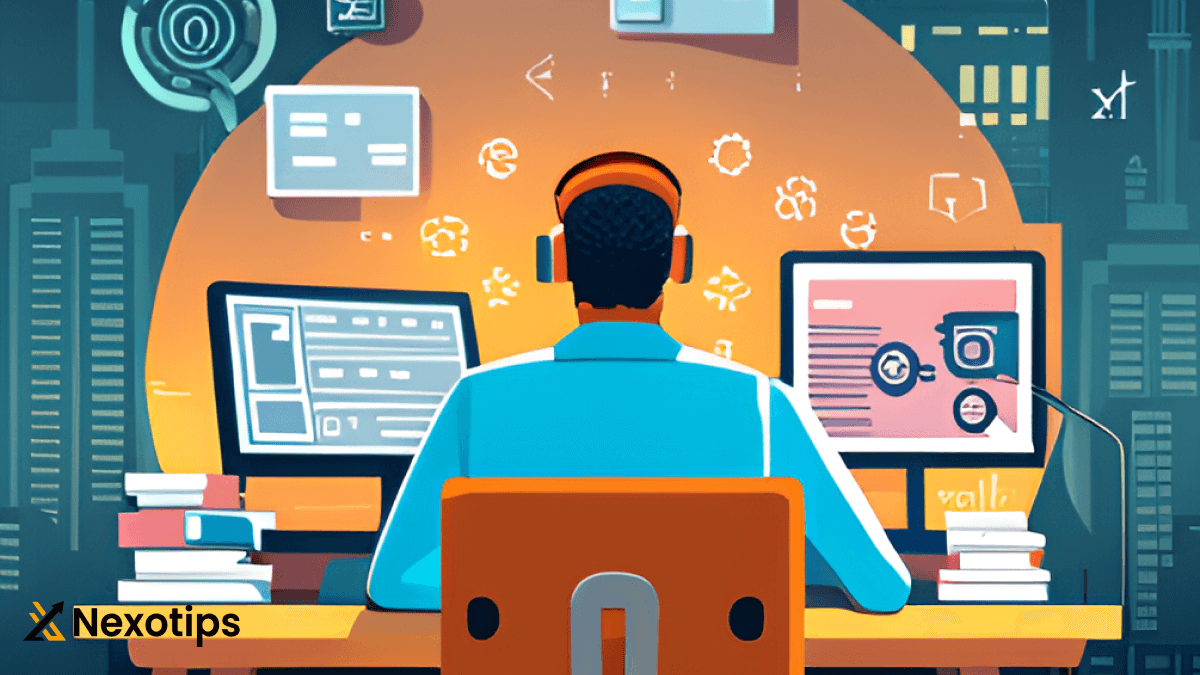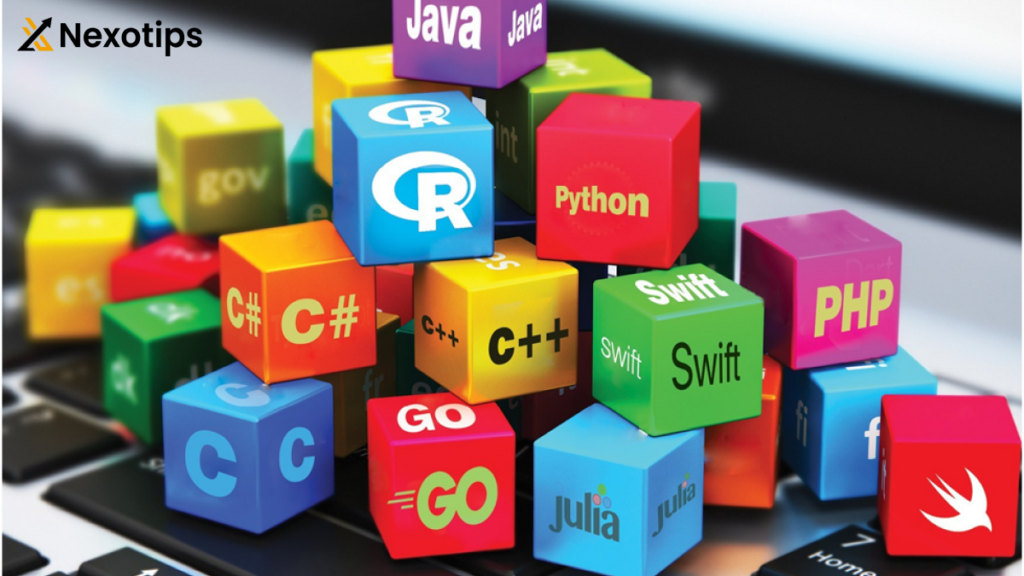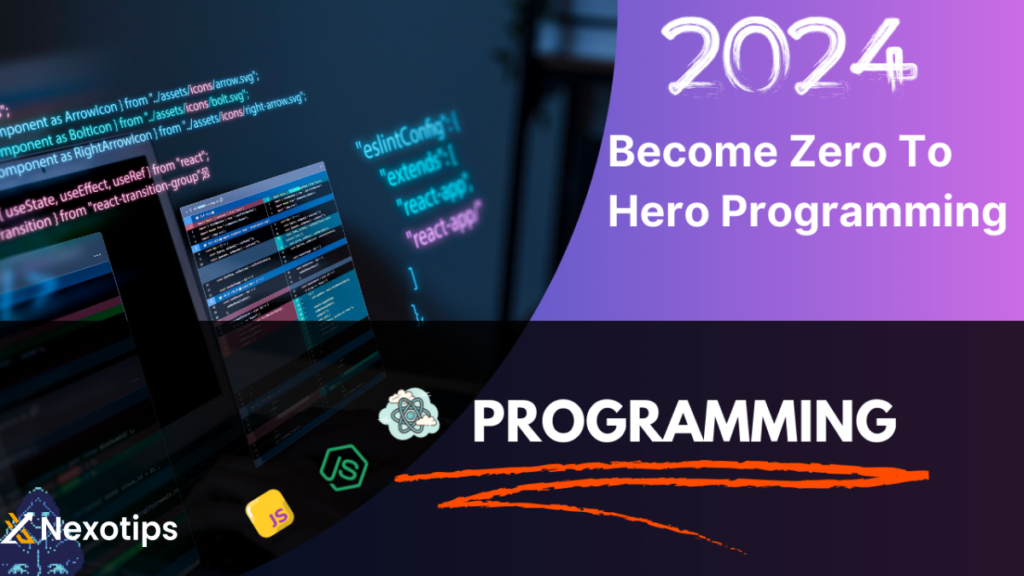
Coding Structure : A Comprehensive 10 Steps on How to Start Coding From Novice to Ninja
A Beginner’s Guide to Coding : Choosing the Right Language and Platform to Start Your Journey and grow your career
Leaving on the excursion of figuring out how to Coding is an interesting undertaking, yet it can likewise be overpowering for fledglings. With so many programming dialects and stages to browse, where do you try and start? Dread not! This exhaustive aide is here to assist you with exploring the huge scene of the coding, from choosing the best language and stage for your objectives to making your most memorable strides in the realm of programming.
In an increasingly digital world, coding skills have become more valuable than ever. Whether you’re interested in pursuing a career in software development, launching your own tech startup, or simply exploring the exciting world of coding, taking the first steps can be both exhilarating and daunting.
Contents :
Step 1 : Figuring out the Essentials
Before we dig into the particulars of programming dialects and stages, we should begin by seeing a few principal ideas:
1.1 What is Coding?
1.2 Why Figure out how to Code?
1.3 Normal Uses of Coding
1.4 The Significance of Picking the Right Language and Stage
- What is Coding?: Coding, also known as programming, involves writing instructions for computers to follow. These instructions are written in various programming languages, each with its own syntax and rules.
- Why is Coding Important?: In today’s digital age, coding is crucial for developing software, websites, mobile apps, and much more. It’s the backbone of technology and drives innovation across industries.
- Types of Coding:
- Web Development: Coding for creating websites and web applications using languages like HTML, CSS, and JavaScript.
- Mobile App Development: Coding for developing applications for mobile devices, often using languages like Java, Swift, or Kotlin.
- Software Development: Coding for building desktop applications or backend systems using languages such as Python, Java, C++, etc.
- Data Science and Analysis: Coding for analyzing and interpreting data using languages like Python or R.
- Game Development: Coding for creating video games using languages like C#, C++, or specialized game development engines like Unity or Unreal Engine.
- Learning Coding: There are numerous resources available online and offline for learning to code, including websites, coding bootcamps, online courses, and books. Some popular online platforms for learning coding include Codecademy, Udemy, Coursera, and free resources like w3schools and Mozilla Developer Network (MDN).
- Career Opportunities: Proficiency in coding opens up a wide range of career opportunities, including software developer, web developer, data analyst, systems analyst, cybersecurity specialist, and more. The demand for skilled coders continues to grow as technology becomes increasingly integrated into various aspects of our lives.
- Coding Best Practices: Writing clean, efficient, and maintainable code is essential for professional developers. This involves following coding standards, documenting code, writing modular and reusable code, testing thoroughly, and continually improving skills through practice and learning.
- Importance: In today’s digital era, coding is crucial for driving technological innovation across industries. It underpins the development of software, mobile apps, websites, and other digital solutions, shaping the way we interact with technology.
- Career Prospects: Proficiency in coding opens up diverse career opportunities, including software developer, web developer, data analyst, systems analyst, and cybersecurity specialist. The demand for skilled coders continues to grow as technology becomes increasingly integrated into daily life.
- Learning Opportunities: There are abundant resources available for learning coding, ranging from online platforms like Codecademy and Coursera to coding bootcamps and traditional educational institutions. Continuous learning and practice are key to mastering coding skills.
These projects can be deciphered by the PC so the PC can then execute what the developer expects to make it do. Instances of the projects and things worked with the code are sites, web applications, portable applications, games, and man-made brainpower frameworks.
Before tackling complex projects, it is essential to master the fundamentals of programming. This includes understanding basic concepts such as variables, data types, control structures, and functions. Online tutorials, coding bootcamps, and interactive learning platforms like Codecademy, freeCodeCamp, and Udemy offer comprehensive courses and resources for beginners. Taking a structured approach to the learning, starting with simple exercises and gradually progressing to more advanced topics, will help you build a solid foundation in programming principles.
Step 2 : Picking the Right Programming Language
With hundreds of programming languages to choose from, selecting the right one can seem overwhelming. The best programming language for you will depend on your goals, interests, and the type of projects you want to pursue. Popular programming languages like Python, JavaScript, and Java are great choices for beginners due to their simplicity and versatility. Researching different languages and their applications can help you make an informed decision based on your preferences and objectives.
With many programming dialects accessible, picking the right one for your objectives is critical. In this section, we’ll investigate probably the most famous programming dialects and their qualities:
2.1 Python: Novice Cordial and Adaptable
2.2 JavaScript: The Language of the Internet
2.3 Java: Strong and Cross-Stage
2.4 C++: Execution Situated and Generally Utilized
2.5 Ruby: Exquisite and Expressive

Once you’ve chosen a programming language, it’s time to set up your development environment. A development environment consists of the tools and software you need to write, test, and debug your code. Most programming languages require a text editor or Integrated Development Environment (IDE) for writing code, as well as a compiler or interpreter to execute it. Popular text editors like a Visual Studio Code, Sublime Text, and Atom offer features like syntax highlighting, code completion, and debugging tools to streamline your coding workflow.
Step 3 : Choosing the Best Stage
As well as picking a programming language, it means a lot to choose the right stage. Various stages take special care of various kinds of improvement, so it is fundamental to pick one that lines up with your inclinations and objectives:
3.1 Web Improvement Stages
- Frontend: HTML, CSS, JavaScript
- Backend: Node.js, Django, Ruby on Rails
- Example : Open a word processor, for example, Visual Studio Code or Radiant Text, and start composing HTML code. Begin with the fundamental design, including Then, at that point, populate the body with your substance.
3.2 Versatile Improvement Stages
- iOS: Quick, Xcode
- Android: Kotlin, Android Studio
- Cross-Stage: Respond Local, Ripple
- Example : Android operating system has been ruling the market for some time now and there are around 2+ million applications accessible for Android starting around 2022. A few notable models incorporate Facebook Courier, WhatsApp, Instagram, Snapchat, Tumblr, Netflix, and Uber and many more.
3.3 Information Science and AI Stages
- Python: NumPy, Pandas, TensorFlow
- R: RStudio, Glossy
- Example : Here is a straightforward illustration of code, written in the Python language: print ‘Hi, world!’ Many coding instructional exercises utilize that order as their absolute first model, since it’s one of the easiest instances of code you can have – it ‘prints’ (shows) the text ‘Hi, world! ‘ onto the screen.
3.4 Game Improvement Stages
- Solidarity: C#, Solidarity Motor
- Incredible Motor: C++,C, Unbelievable Motor
- Example : C language is a framework programming language since it is very well may be utilized to do low-even out programming (for instance driver and bit). It is by and large used to make equipment gadgets, operating system, drivers, bits, and so on. For instance, Linux portion is written in C. It can’t be utilized for web programming like Java, .Net, PHP, and so on.
Step 4 : Evaluating Your Objectives and Interests
Since you have a superior comprehension of programming dialects and stages, now is the ideal time to survey your objectives and interests. Pose yourself the accompanying inquiries:
4.1 What is it that I need to accomplish with coding?
4.2 Am I keen on web advancement, versatile turn of events, information science, game turn of events, or another field?
4.3 Do I lean toward working with frontend advancements, backend advances, or both?
4.4 What are my drawn out profession yearnings?
Coding can be a solitary pursuit, but it’s essential to seek support and collaboration from others in the coding community. Join online forums, coding communities, and social media groups to connect with fellow coders, ask questions, and share resources. Participating in coding challenges, hackathons, and open-source projects is a great way to gain practical experience, expand your network, and learn from others’ expertise.
Step 5 : Getting everything rolling with Your Picked Language and Stage
Whenever you’ve picked a programming language and stage that line up with your objectives and interests, now is the right time to focus in and begin. In this section, we’ll walk you through the underlying strides of learning and rehearsing your picked language and stage:
5.1 Setting Up Your Advancement Climate
5.2 Learning the Essentials: Punctuation, Information Types, Factors, and Control Designs
5.3 Structure Straightforward Undertakings and Activities
5.4 Looking for Help and Assets: Online Courses, Instructional exercises, and Local area Discussions

Step 6 : Growing Your Insight and Range of abilities
As you become more OK with your picked language and stage, it is vital for the keep learning and extending your range of abilities. In this section, we’ll investigate progressed subjects and assets to assist you with taking your coding abilities to a higher level:
6.1 High level Programming Ideas: Article Arranged Programming, Calculations, and Information Designs
6.2 Particular Libraries and Structures
6.3 Adding to Open Source Undertakings
6.4 Seeking after Conventional Schooling: Bootcamps, Certificates, and Degrees
Learning to code is a journey filled with the challenges and setbacks, but it’s essential to maintain a growth mindset and persevere through adversity. Embrace failures as learning opportunities and approach coding with curiosity, resilience, and a willingness to experiment. Celebrate your successes, no matter how small, and stay motivated by setting achievable goals and tracking your progress over time.
Step 7 : Exploring Difficulties and Remaining Spurred
Figuring out how to code is an excursion loaded up with difficulties and hindrances. In this section, we will talk about normal difficulties looked by amateur coders and systems for defeating them:
7.1 Inclination Overpowered by the Expectation to learn and adapt
7.2 Managing An inability to acknowledge success
7.3 Offsetting Learning with Different Obligations
7.4 Remaining Spurred and Predictable in Your Learning
Step 8 : Building a Portfolio and Systems administration
As you gain trust in your abilities to code, it is crucial for grandstand your abilities and associate with different experts in the field. In this part, we will examine the significance of building a portfolio and systems administration:
8.1 Making Tasks to Grandstand Your Abilities
8.2 Sharing Your Work on GitHub and Different Stages
8.3 Going to Coding Meetups, Gatherings, and Systems administration Occasions
8.4 Working together with Companions and Tutors
Step 9 : Practicing Regularly:
Like any skill, coding requires practice and dedication to master. Set aside dedicated time each day or week to practice coding exercises and work on projects. Start with small projects that align with your interests and gradually increase the complexity as you gain confidence and proficiency. Building a portfolio of projects not only showcases your skills to potential employers but also provides tangible evidence of your progress and growth as a coder.
Step 10 : Arranging Your Vocation Way
At last, we should discuss arranging your vocation way in the realm of the coding. Whether you seek to the turn into a web engineer, information researcher, game designer, or something totally different, it’s crucial for put forth clear objectives and make noteworthy strides towards accomplishing them:
10.1 Investigating Different Vocation Ways and Occupation Jobs
10.2 Structure Major areas of strength for an Organization
10.3 Looking for Temporary jobs, Independent Open doors, or Passage Level Positions
10.4 Proceeding with Your Schooling and Seeking after Cutting edge Affirmations or Degrees

Network with professionals : Connect with experienced developers, mentors, and professionals in the coding industry to seek advice, guidance, and mentorship.
Never stop learning : Recognize that coding is a lifelong learning journey, and commit to continuous learning and improvement to stay relevant and competitive in the ever-changing tech landscape.
Experiment with new technologies : Explore new programming languages, frameworks, and tools to broaden your skill set and stay adaptable in a rapidly evolving tech landscape.
Here is the website for starting the coding in Web Development : https://www.w3schools.com/
Here is the website for starting the coding in App Development : https://developer.android.com/kotlin
Coding is a valuable skill that empowers individuals to create, innovate, and solve complex problems in a digital world. Whether you’re a beginner or an experienced coder, there’s always something new to learn and explore in the ever-evolving field of programming.
In Short :
- Learn coding basics: Understand variables, data types, control structures, and functions.
- Choose a programming language: Pick one based on your goals and interests.
- Set up your environment: Install a text editor or IDE and necessary tools.
- Start with simple projects: Begin with small exercises to build confidence.
- Practice regularly: Dedicate consistent time to coding practice.
- Join coding communities: Engage with others for support and collaboration.
- Embrace growth mindset: View failures as opportunities to learn and grow.
- Build a portfolio: Showcase your projects to demonstrate your skills.
- Take online courses: Utilize platforms like Codecademy and Udemy for learning.
- Participate in challenges: Test your skills and gain experience in coding competitions.
- Contribute to open-source: Contribute to projects to gain real-world experience.
- Read coding blogs: Stay updated on industry trends and best practices.
- Attend coding workshops: Learn from experts and network with peers.
- Experiment with new tech: Explore new languages, frameworks, and tools.
- Challenge yourself: Push beyond your comfort zone to expand your skills.
- Document your journey: Keep track of your progress and achievements.
- Network with professionals: Connect with mentors and peers for guidance.
- Stay motivated: Set goals and celebrate your successes along the way.
- Share your knowledge: Teach others and contribute to the coding community.
- Keep learning: Recognize that coding is a lifelong journey of growth and improvement.
End:
Congrats! You have arrived at the finish of this extensive aide on the best way to begin coding and pick the right language and stage for your excursion. Keep in mind, figuring out how to code is a long distance race, not a run. Take as much time as necessary, remain inquisitive, and learn constantly. With the commitment and tirelessness, you will be well end route to turning into a capable coder. Cheerful coding!
Starting your coding journey can be intimidating, but with the right mindset, resources, and support, it is a rewarding and fulfilling pursuit. By understanding the basics, choosing the right programming language, setting up your development environment, and practicing regularly, you can build a strong foundation in coding and unlock endless possibilities for creativity, innovation, and career growth. Remember that every coder started as a beginner, and with dedication and perseverance, you too can become a proficient coder and make your mark in the world of technology.
